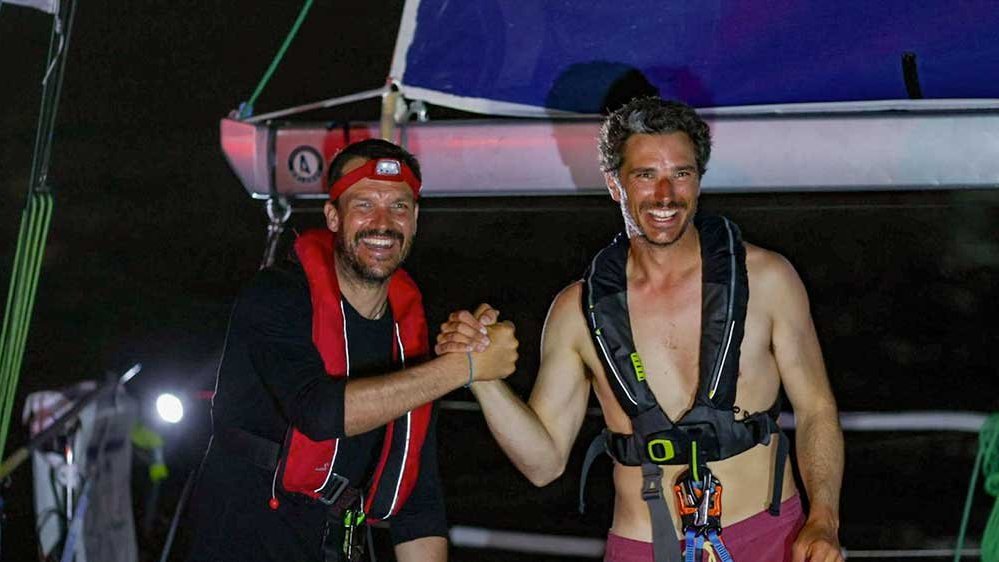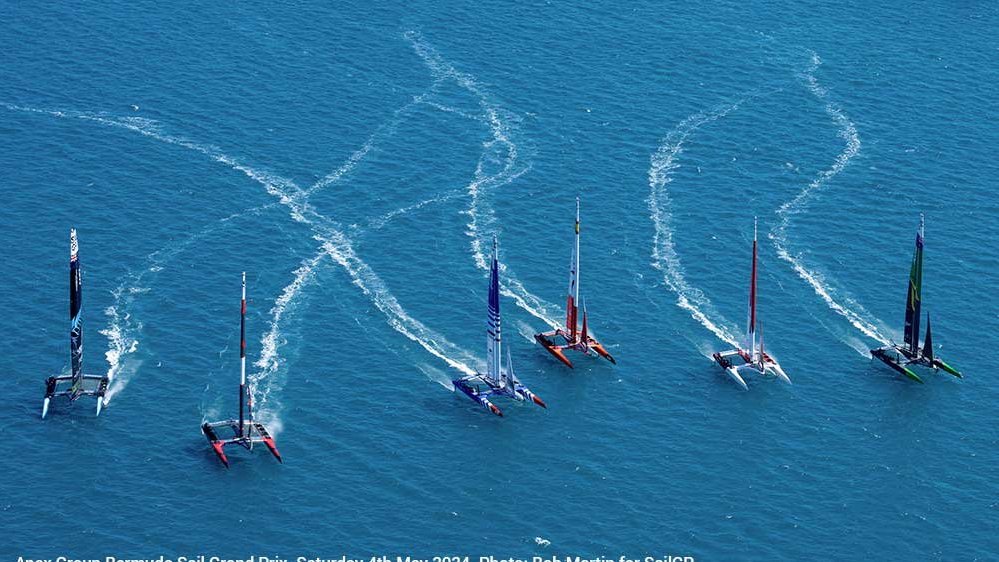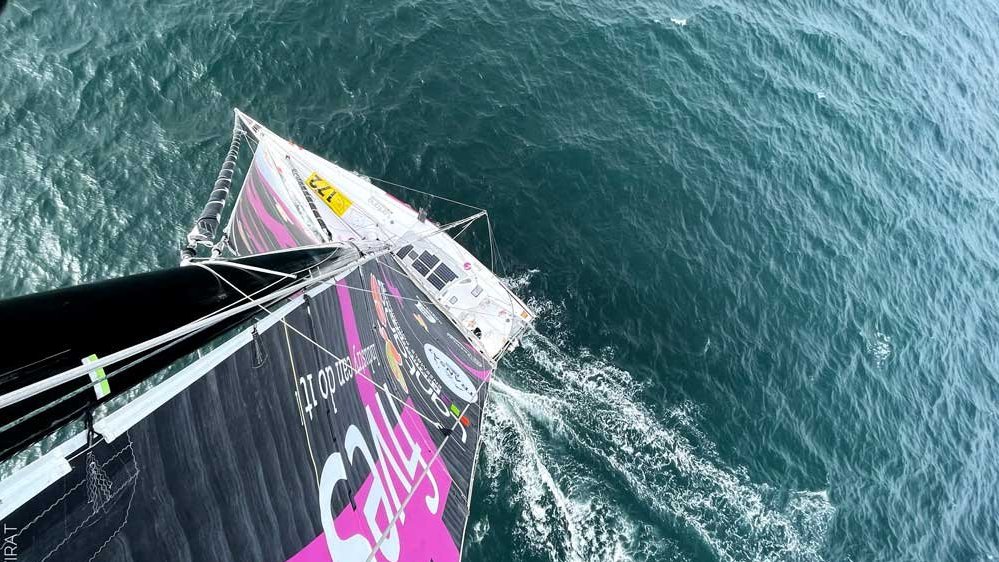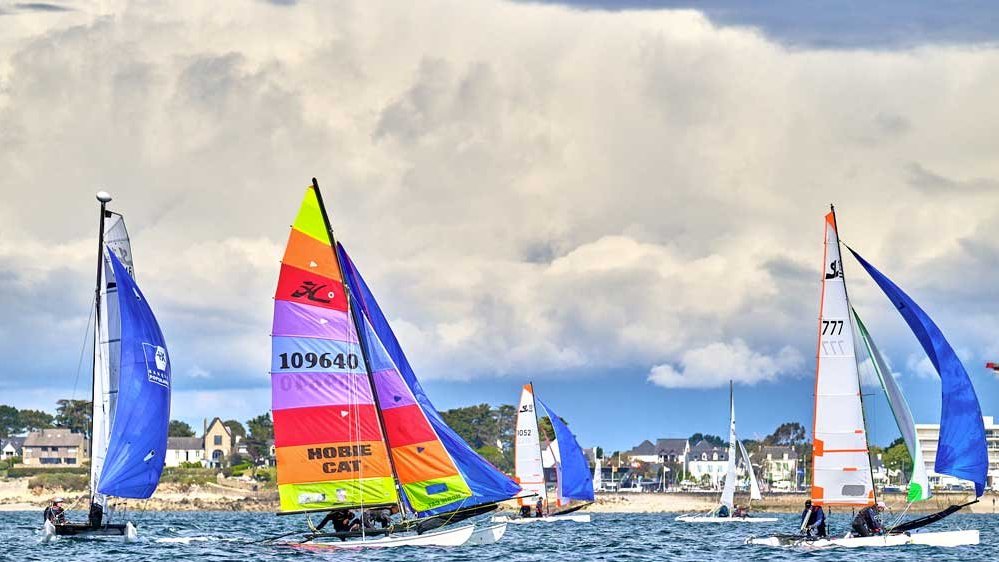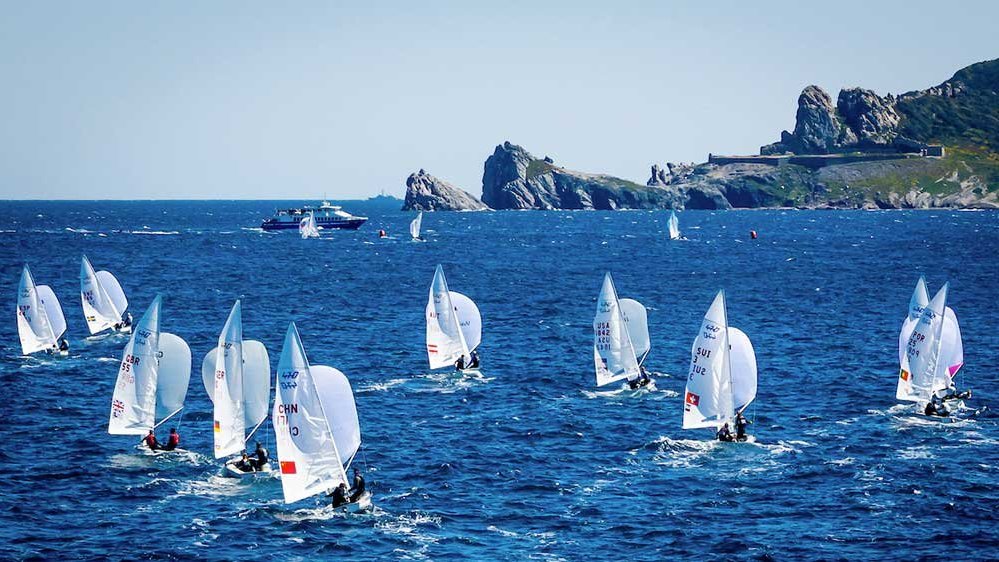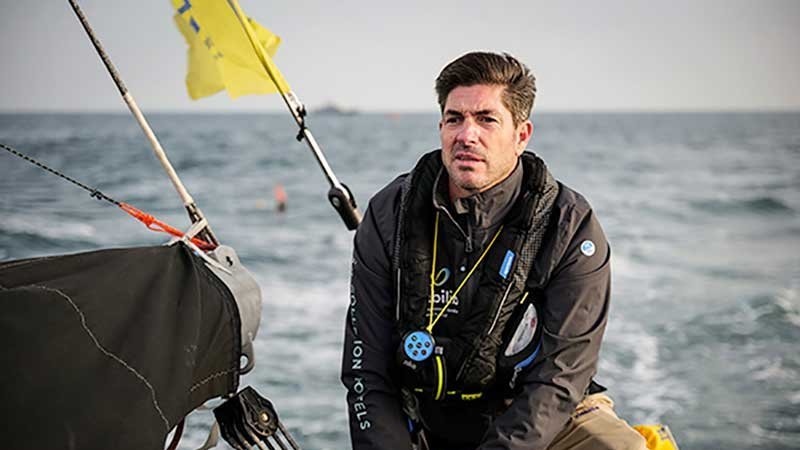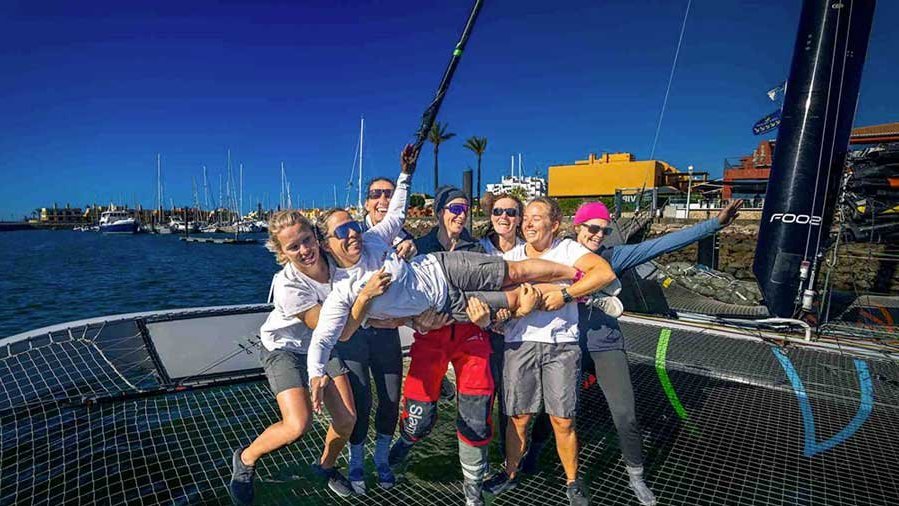
Route du Rhum
Brit Sharp wins Class 40 first top transat
18 days 10 hours 21 minutes et 18 seconds for his Pogo 40
jeudi 16 novembre 2006 –

On November 6th, a few days after he broke from his opponents to pick up a north-westerly route, Phil Sharp hooked up at the lead of the 40-footer fleet and never gave it back. His option led him high in the north Atlantic where he had to face the most violent low pressure system of the race. Sharp crossed the line in front of the eyes of Dad and Grandmother, a moment that was quite emotional. Next step for Phil is the Vendée Globe 2008
Before the start, Phil Sharp (philshapracing.com), declared he liked winning and that he would never give up until he has achieved something. Should we, now, consider this an omen ?
Weather option at the Azores
After a bad start (21st place) on November 29th, the British skipper quickly stepped up in the fleet to rank 3rd on November 1st ( 3 days after the start). After reaching fast down to the Azores – with speed averages hitting 12 to 18 knots on a 12 meter-boats – it was time for the fleet to make the most crucial decision in the race : pick up a weather system and utilize that tactical option for the crossing. That is when the 40-footer fleet split, and the 3 front leaders as well.
As Gildas Morvan mentioned later, the weather routing was giving the northern route as the best choice, but it also meant more miles to sail. Morvan chose to stay on an average course between Sharp and Vittet.
Sharp takes the lead and fights storms
On November 5th, the weather options were set. Sharp took the northwesterly route (a choice made with his weather router around Nov 3rd), Dominic Vittet (Atao Audio System) the most southern one and Gildas Morvan (Oyster Funds) chose the middle. Phil Sharp’s choice paid off quickly. In the night between 5th and 6th he took the lead of the 40-footer fleet (at 8:00 on Nov. 6th he was 12.8 miles ahead of Gildas Morvan).
At that moment, the lateral distance between Sharp (north) and Vittet (south) was 300 miles, which made Vittet smile at one point, as he noticed that the new leader’s bows were closer to New York than to Guadeloupe. But the worst of this race was to come : in the night between the 7th and 8th, most of the 40-footer fleet went through “Dantesque” conditions. But Phil was the only one to touch up to 60 knots of winds – too much to handle the boat -, seas coming up from nowhere, painful rain. He added up to that a capsize and the loss of his gennaker. That was for the first low !
Then came the second, and in between both, the need to climb up the 24-meter mast to sort out the genoa bracket that broke the night before. This was a dangerous and exhausting exercise in a big sea.
Even if Phil said he was sailing in a quite conservative manner “not to do anything stupid” the passage of the second storm came with a few numbers of broaches in 40 knots winds and surfs at 22/25 knots. He still maintains a 100ish mile lead over Morvan.
Less that 1000 miles to run to finish
On November 10th, Phil and Gildas Morvan (2nd) passed a symbolic step in the race. They had less than one third of the distance to run. In the night Phil recovered a “bit” of sleep, well, 6 hours to say so, which is a lot for a solo sailor, but nevertheless needed after the conditions he went through. Another low pressure system (3rd one in 3 days) is materializing ahead and once again it is more favourable to skippers on the northern road where Phil and Gildas are – Phil more to the North. Both skippers were sailing in more pressure and touched the shift of winds first. That shows on the polling as they dug a 200-mile gap between themselves and the rest of the fleet. On November 12, both of them speculated about the conditions for the arrival : Gildas Morvan thought they would be reaching hard to the final which would give him an advantage as Phil Sharp lost his gennaker. For Phil the most difficult thing to deal with would be the light winds around the islands and the perspective to see Gildas homing in while he would find himself “parked”without wind.... These proved to be only hypothesis !
For Phil, the main concern was then to make as much gain as he could on Gildas, to ensure he would not catch up if philsharpracing.com was going to slow down or “park”.
And then the yo-yo game began
Receiving the pollings in between the 12 and the 15 of november was a nerve wracking experience. The miles between the two leaders came and went every four hours and showed the different winds which Gildas and Phil were in.
Overnight on the 14th Phil finally touched a zone of Trade Winds that enabled him to increase his advance to a point of no return (130 miles and more).
That’s when Morvan conceded the loss of the race saying he did not see how, in such conditions, he could come back on to the Briton.
Victory at hand
After cautiously rejecting the speculations of those claiming his victory one day before, Phil finally mentioned the word “winning” on the the 15h. Phil had stated on a vacation that his Dad would be there to welcome him after this splendid passage, and said that crossing the line in his position would be quite emotional.
Voir en ligne : More about the Class 40 winner : philsharpracing.com
Dans la même rubrique
VELUX 5 OCEANS : Briton Alex Thomson first leader from Bilbao

Velux 5 Oceans : Mike Golding : "I would have liked to see a bigger fleet"

VELUX 5 OCEANS : Robin Knox-Johnston to compete again around the world

VELUX 5 OCEANS : Kojiro Shiraishi to fly flag for Japan

 Sea, Sail & Surf news
Sea, Sail & Surf news

